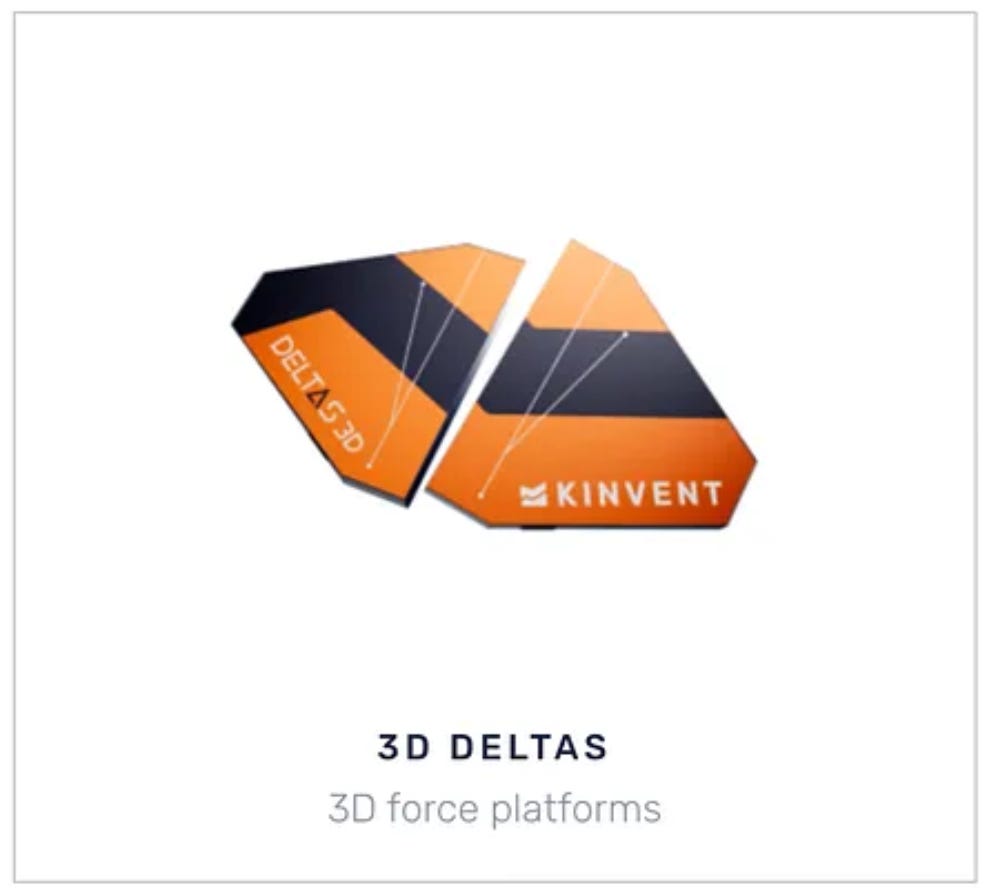📈 ⚽ Upside Analysis: Multidirectional Maneuver Vendor Ecosystem: Key Use Cases, Vendors, Recommendations To Teams
In modern sports, the ability to move efficiently in multiple directions—cutting, pivoting, accelerating, and decelerating—is more critical than ever. Linear sprint speed is still a key metric, but it no longer suffices as a standalone indicator of elite performance. Sports like football, basketball, tennis, soccer, and rugby demand constant shifts in direction, reaction, and explosive movement in tight spaces.
Traditional GPS systems and general timing tools offer value, but they fail to fully capture the complexity of real-world movement. This gap has led to the emergence of a specialized vendor ecosystem focused on multidirectional movement performance—a category that blends biomechanics, inertial sensing, machine learning, and first-principles physics to assess athlete output in all three planes of motion.
These vendors deliver real-time and post-session analytics, helping teams quantify:
Biomechanical load in every movement direction
Asymmetries and inefficiencies
Readiness and return-to-play thresholds
Power production during rapid deceleration or lateral reacceleration
As performance and medical teams continue to align under integrated performance models, multidirectional tracking has become central to load management, return-to-play, injury risk reduction, and position-specific skill development.
Definition: What Are Multidirectional Actions?
Multidirectional actions refer to athlete movements that occur in multiple planes:
Sagittal plane: Forward and backward (e.g., sprinting, backpedaling)
Frontal plane: Lateral movement (e.g., shuffling, side-stepping)
Transverse plane: Rotational movement (e.g., turning, pivoting, spinning)
Unlike linear sprinting, these actions involve:
Non-linear acceleration
Rapid deceleration
Directional torque and braking forces
Multiplanar coordination
To quantify performance in these movements, vendors now use first-principles physics—starting from Newtonian mechanics rather than arbitrary metrics. By integrating mass, acceleration, and displacement data with movement direction, they calculate:
Mechanical Work (in Joules) – the total energy output, regardless of direction
Power (in Watts) – the rate at which work is performed, which reflects explosiveness and control
Change of Direction Efficiency (COD-E) – the cost and quality of transitions between movement vectors
Agility Indices – combining movement time, reaction time, and force output
These measurements form the basis for a complete, actionable performance picture, especially valuable for sports with frequent short bursts, rapid CODs, or positional lateral movement.
Key Use Cases Across Sports Performance
Return to Play & Rehabilitation
Athletes recovering from ACL tears, ankle sprains, or hamstring injuries often regain linear sprint capacity before regaining full multidirectional function. Tracking mechanical efficiency in lateral or rotational actions helps teams set safer return-to-play benchmarks, particularly when evaluating:
Cutting ability vs. non-injured limb
Braking efficiency under load
Reaction movement time in open drills
Agility and Change of Direction Performance
Sports like soccer and basketball demand rapid changes of direction every 2–4 seconds. These technologies track how quickly athletes:
Redirect force
Minimize time spent decelerating
Transition between speed zones
This data informs both drill design and conditioning periodization, helping coaches adapt training to position-specific demands.
Load Monitoring and Training Optimization
Not all loads are created equal. Multidirectional work puts unique strain on ligaments, tendons, and neuromuscular control. These platforms enable:
Monitoring of cumulative mechanical work
Session-by-session fatigue profiling
Identifying overtraining or undertraining in certain planes
Positional Profiling and Tactical Conditioning
Wide receivers, defenders, guards, and fullbacks all move differently. Systems quantify movement density, work-per-meter, and reactive load, enabling individualized conditioning plans.
Talent ID & Long-Term Athlete Development
Younger or developmental athletes with superior reactive agility and deceleration power are strong future bets. Many collegiate programs now use multidirectional movement profiling as a layer in recruiting evaluations.
Key Vendors
This list of vendors before is not meant to be exhaustive.
ADI (Agility Data Innovations)
Agility Data Innovations (ADI) specializes in high-performance wearable sensors that use first-principles physics to deliver real-time Mechanical Work, Power, and Load Efficiency data in multidirectional contexts. Their system is built for game-speed agility monitoring, enabling S&C coaches and sport scientists to make immediate tactical and training decisions. ADI is trusted by elite organizations including NFL and NCAA teams for cutting-edge change of direction analytics. Website: https://www.agilityai.com
Kinvent
Kinvent's 3D Deltas Force Plates provide detailed analysis of ground reaction forces in all three planes of motion, making them ideal for COD profiling, jump diagnostics, and rehab tracking. The system integrates seamlessly with Kinvent’s broader sensor ecosystem (grip strength, isometric testing, etc.) and provides cloud-based feedback through their KFORCE app. Designed to be portable, affordable, and rehab-focused, Kinvent is a growing choice among physios, rehab specialists, and multidisciplinary teams. https://www.kinvent.com
Here is a video showcasing KINVENT’s 3D Force plates, which are 3 Dimensional force plates combined with MOCAP bringing lab-level precision directly to the field. Unlike traditional force plates that only capture vertical force, 3D Deltas measure movement in all directions, providing a complete picture of an athlete’s or patient’s biomechanics. By combining 3D force plate technology with motion capture, it allows for real-time insights into (1) Change of direction efficiency, (2) Lateral movement & performance metrics (3) Injury risk assessment & rehab progress and (4) Sport-specific movement analysis.
VALD (ForceFrame + SmartSpeed)
VALD offers robust field-testing tools like the ForceFrame and SmartSpeed timing gates to quantify asymmetries, COD split times, and force output under standardized protocols. Their solutions are popular for profiling during return-to-play and preseason screening rather than continuous gameplay analysis. VALD also integrates data across different platforms (NordBord, ForceDecks) via a unified dashboard.
https://www.vald.com
MuscleLab
MuscleLab delivers biomechanics-grade motion analysis via IMU sensors and laser-based systems that are often used in elite lab or research environments. It enables high-precision kinematic and kinetic measurement in activities like sprinting, jumping, and multidirectional drills. While not primarily real-time, its data integrity is suitable for longitudinal performance tracking and rehabilitation baselining.
https://www.ergosport.com/musclelab
Qualisys + Noraxon
This duo combines Qualisys’ advanced optical motion capture with Noraxon’s electromyography and force platforms to create one of the most comprehensive movement analysis systems available. It's primarily used in sports science labs or rehab clinics to capture joint angles, muscle activation, and force output in 3D. While extremely powerful, this system is costly and not designed for everyday field deployment. https://www.qualisys.com https://www.noraxon.com
Recommendations for Teams Considering Adoption
Start With a Movement Profile Baseline
Before integrating with practice, run baseline assessments to capture each athlete's multidirectional mechanics—particularly deceleration control and lateral symmetry.Target Rehab and RTP First
The most immediate ROI often comes from RTP—where real-time feedback helps avoid reinjury and allows for direction-specific reconditioning.Integrate With Load Monitoring Systems
Sync mechanical work data with GPS, HR, and RPE for more holistic athlete monitoring. High total loads + poor directional efficiency = red flag.Prioritize Real-Time Feedback for Field Use
Solutions like ADI and Plantiga allow immediate feedback loops during drills. This is valuable for coaching corrections and athlete learning.Ensure Staff Collaboration and Buy-In
Sports science, medical, and performance coaches must share interpretations and align on how directional data informs decisions.Evaluate Long-Term ROI in Movement Quality
Improvements in agility and reactive power have strong links to game outcomes, injury reduction, and competitive advantage. Track athlete development over seasons, not just sessions.
Conclusion
As sports become faster, more dynamic, and more injury-conscious, the ability to quantify how athletes move—not just how fast or far—has become a key differentiator. The multidirectional maneuver vendor ecosystem addresses this need with physics-based, real-time analytics that provide a richer, more complete picture of athlete performance.
Vendors like ADI are pushing the envelope by calculating mechanical work and directional power, while others like Kinvent or VALD offer valuable insights into load asymmetries and controlled drill metrics. The challenge for teams is no longer availability—it’s integration, staff education, and selecting the right tool for the environment.
Teams that invest in these systems will benefit from:
Reduced injury risk
Enhanced rehab precision
Optimized training loads
More informed scouting and development
Multidirectional performance tracking is not just the future—it’s the now. And it’s rapidly becoming the foundation of high-performance team operations across elite sport.
You may also like:




